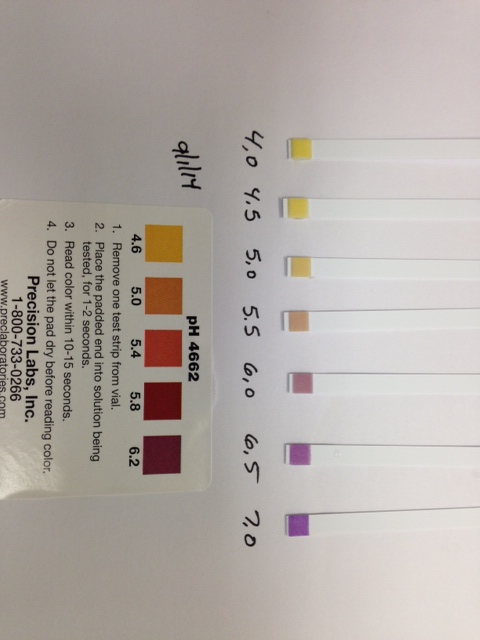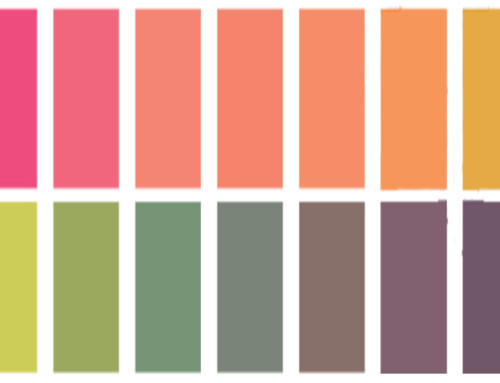We get quite a few questions on our Beer pH Test strips from homebrewers, and more often than not, the question or issue is similar. Today, we’re going to hopefully clear a few things up by answering Al’s question below.
“I have purchased the pH 4.6-6.2 test strips for testing my homebrew. I have recently made an all-grain beer and tested the pH during the mash. The temperature of the mash (water/fermentable mix) was between 100°F to 170°F during the testing. During every test the pH test strip color never changed.
If the pH is outside the range of the pH test strip, will the color change? Should I be testing with this strip at a specific temperature or range?”
Al
____
Hi Al,
Thank you for purchasing our 4.6-6.2 pH test strips. Let’s start with your first question regarding the color change outside the range of the test strip.
Our pH test strips will change color beyond the range of the color chart provided. The pH 4.6-6.2 test strips will turn purple in alkaline waters (pH >7). There is a way to check this. Concentrated bleach will turn the strips purple, then yellow and then white as the paper bleaches out. Dilute bleach will turn the strips purple, then eventually a greenish color if they sit out for a few minutes.
In acids, there isn’t as much of a change to the color of the test strip. Thus, below a pH of 4.6 (lowest value on the color chart), the color change is minimal. When testing vinegar (dilute acetic acid), the test strips should remain yellow. We have tried the test strips using both concentrated and dilute acetic acid and both results were yellow. You might try adding a little vinegar or bleach to small samples of the water to confirm that the strips react as expected.
Temperature will have a slight effect on test strip reactions. It seems that raising the temperature from 25°C to 70°C causes the color to shift about ½ a color unit higher. At a temperature range of 100-170°C, the color shift could be up to 1 ½ units higher.
When testing RO, distilled, or tap water, the strips might not behave as you would expect. The indicators used with the strips require that the waters being tested have some buffering capacity. RO and distilled waters have little or no buffering capacity, and the test strips will not work in these waters. If the tap water has a very low buffer capacity (low hardness, low alkalinity, etc.) the color can take much longer than the recommended 1-2 second immersion and 10-15 second development time.

The above picture shows results on various buffer solutions with the color transitioning from yellow to purple. These particular buffers did not develop very intense colors in the pH 5-6 region. The shades were close, but the intensity was not as intense as the color chart. We would expect that the mash has sufficient buffer capacity.
Since the color of the strip remained yellow, that would seem to indicate that the pH was lower than 4.5. If this is not what you would expect, we would suggest two things:
First, note that the pads on the test strips are yellow when they are made. If they are not yellow, then they have been exposed to heat, humidity, light, or some other detrimental condition.
Try the bleach test described above to make sure the strips are reacting like they should. If they do not turn purple, then it is possible that the strips are old. If this is the case, you need a fresh vial of test strips.
We are beginning to put lot numbers and expiration dates on the vials to help remedy the issue of outdated test strips. However, these vials will likely take some time to get into circulation. If stored properly, the beer pH test strip has a shelf-life of 3 years.
For further questions regarding the Beer pH test strips, please feel free to give us a call and speak with our technical department.
Best of luck with all your homebrew adventures!







Hi,
We need to know what is the life expectancy of your Chlorine and Iodine Test Strips.
Are those reliable after two years?
The chlorine and iodine test papers are guaranteed to perform to specifications (+/- ½ color unit) for a minimum of two years from the date of purchase provided they have been stored in the original packaging, away from direct sunlight and kept in a cool, dry place (no exposure to heat or humidity).
In practice, when stored properly, the test papers are very stable and their performance can meet specifications for much longer than the two year period. It is highly recommended that papers to be used past their two year shelf-life be rechecked using appropriate standards.
Over a long period of time, the performance can be expected to fall outside of specification. Evidence of this is seen when the paper strips read lower than expected. The performance deterioration normally occurs gradually, not all at once.
How about ph of 3 and below? I bought strips, unfortunately unseen, and the chart doesn’t hit 3.
We do have a range of other pH strips, with some that have a more acidic pH range. If you check out the pH products on our website, you’ll find a few: pH 0-1.5, pH 0-2.5, pH 2.8-4.4 (narrow range acidic strips) or wider range strips like pH 1-14. Once you find the one you think will work best for your application, visit the Where to Buy page to find a distributor.